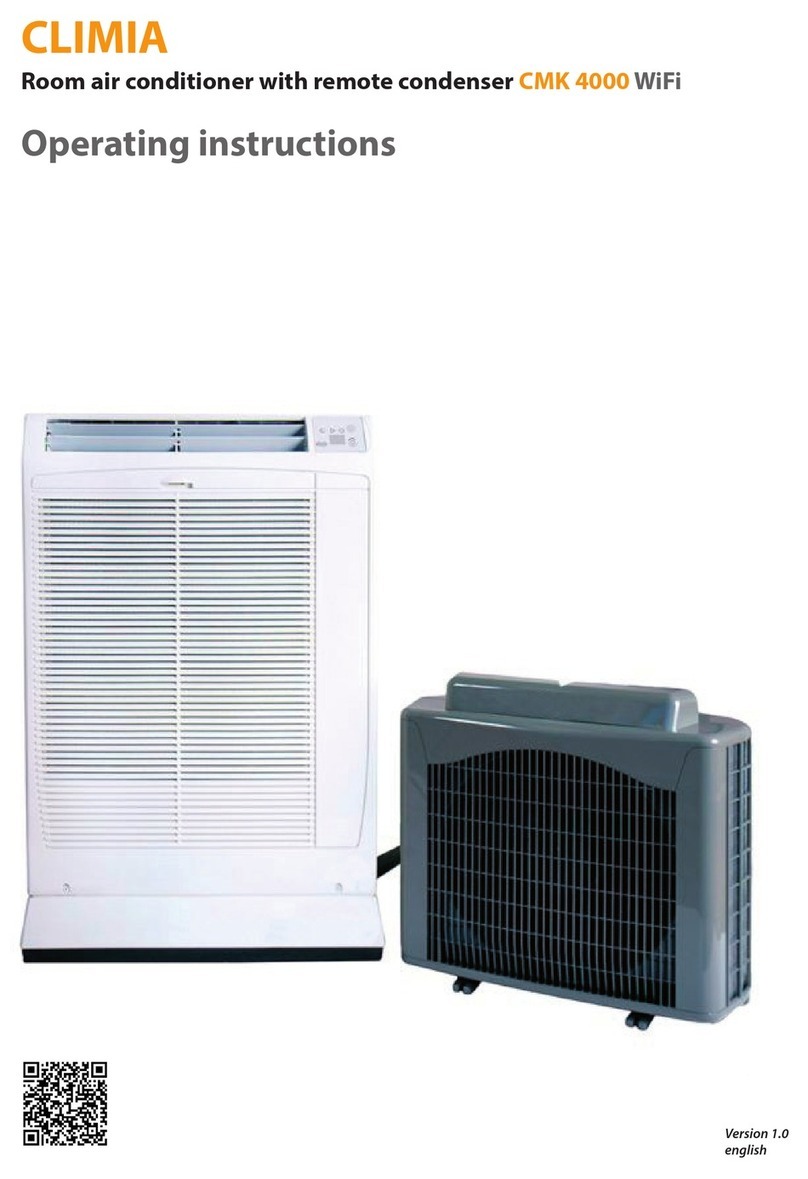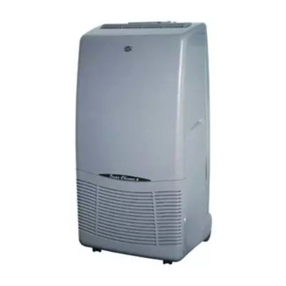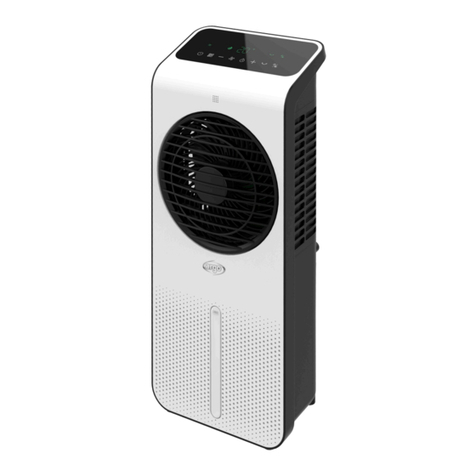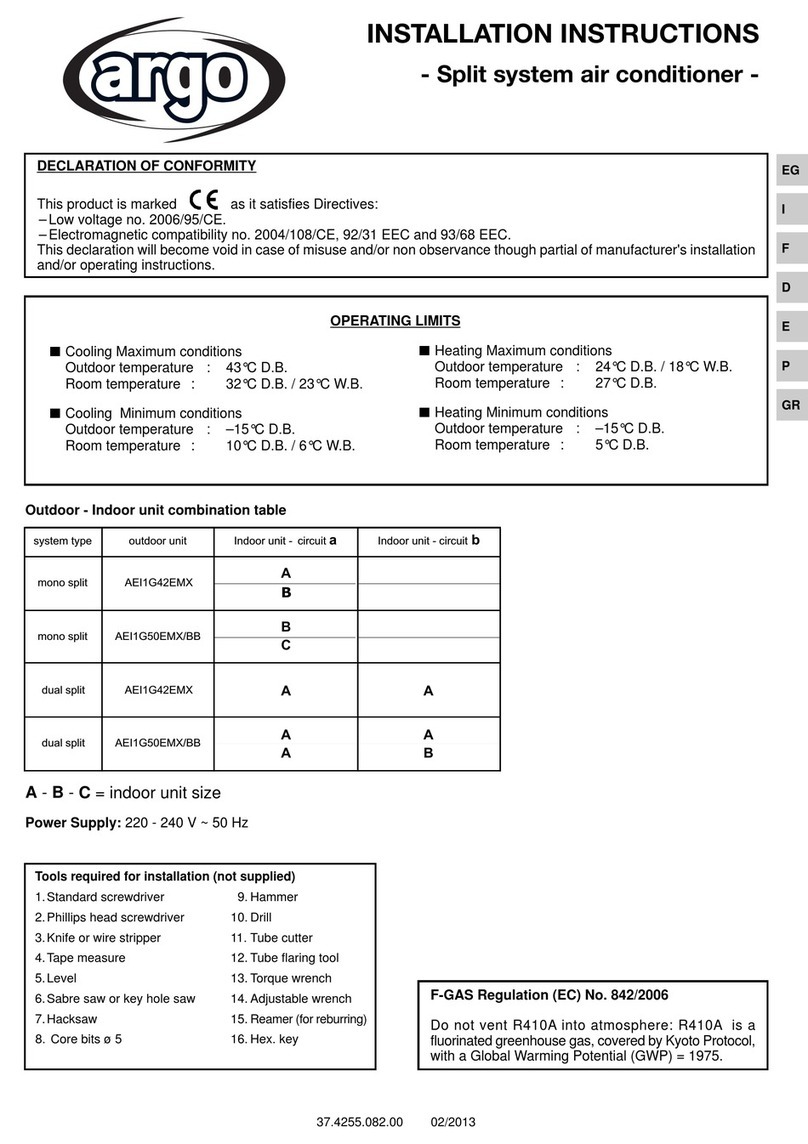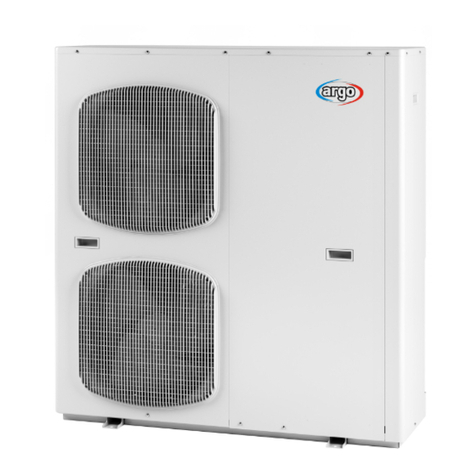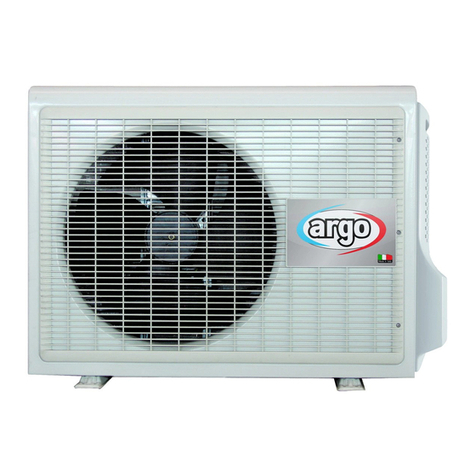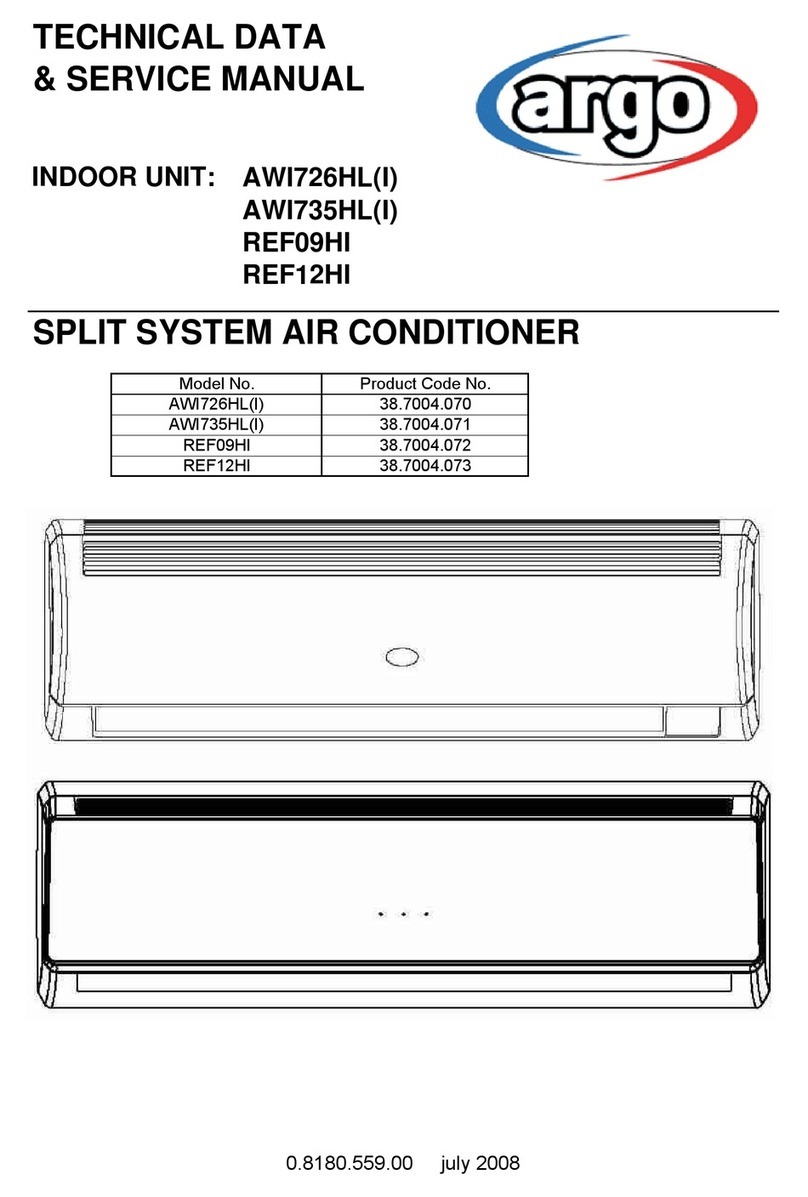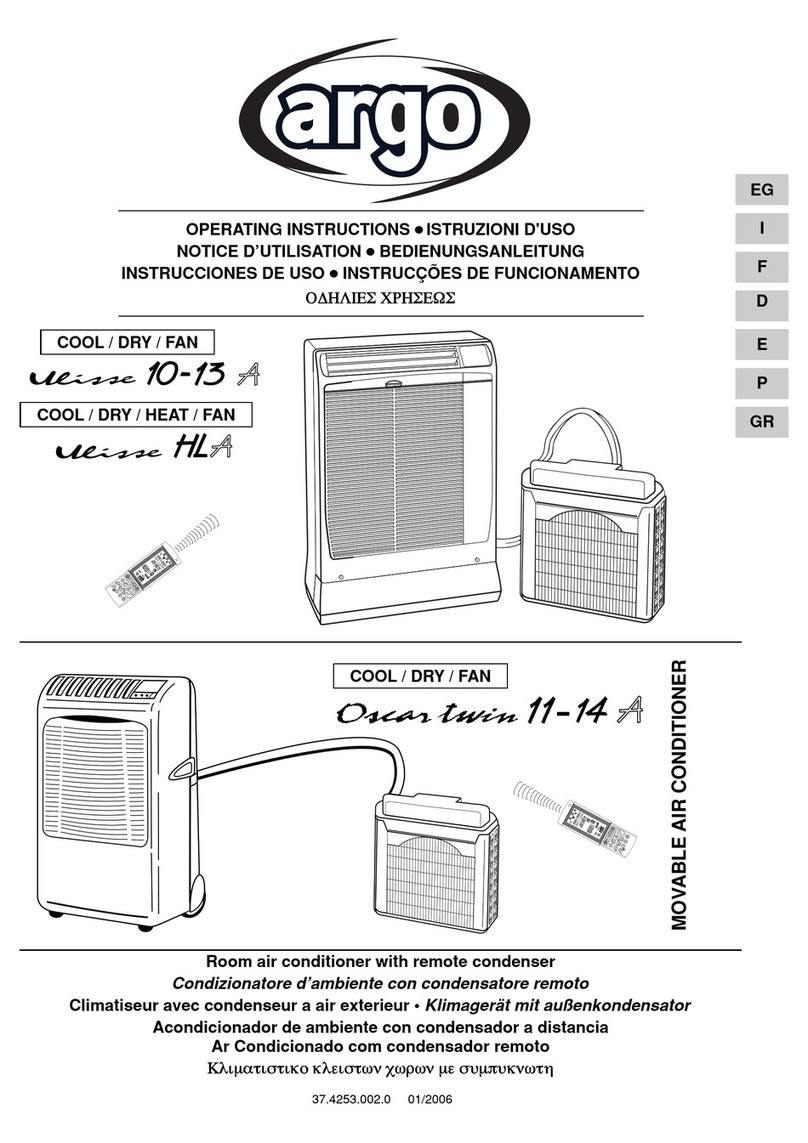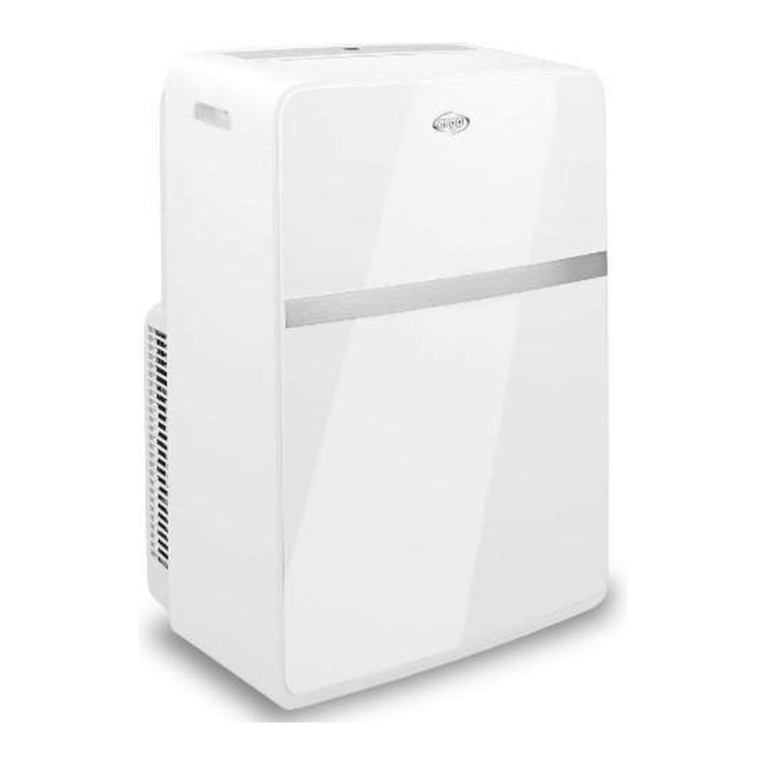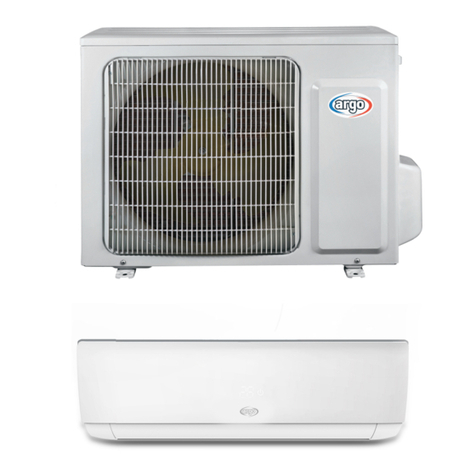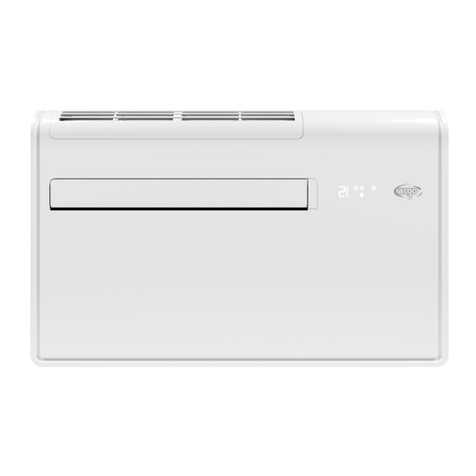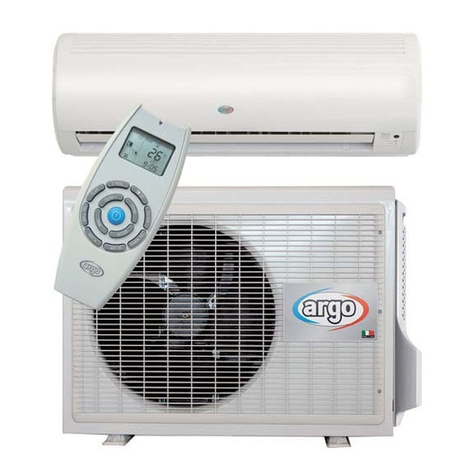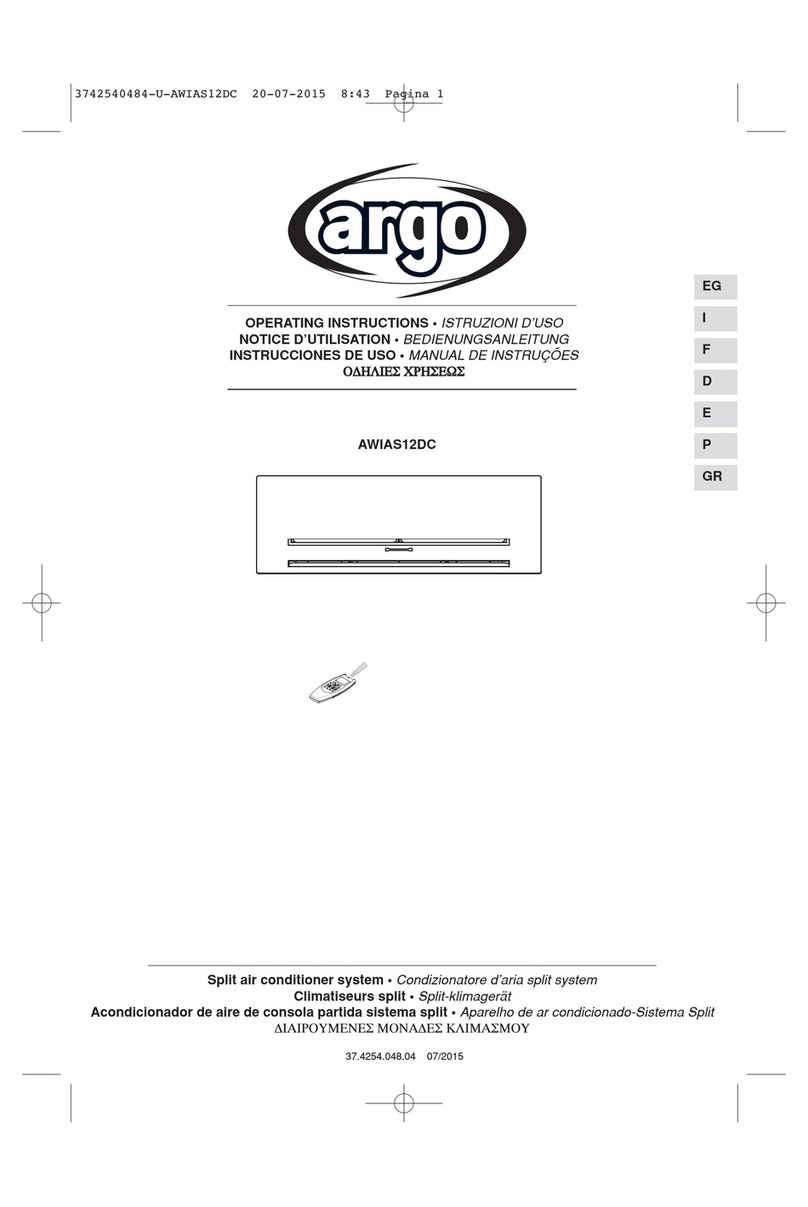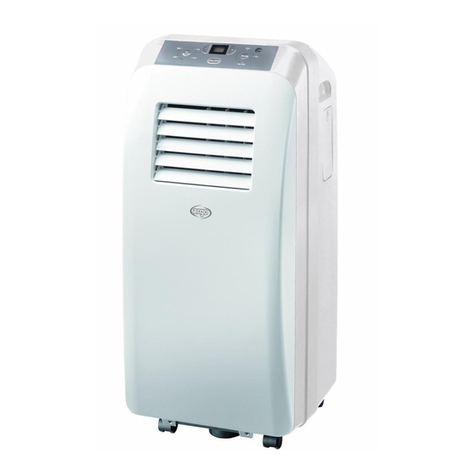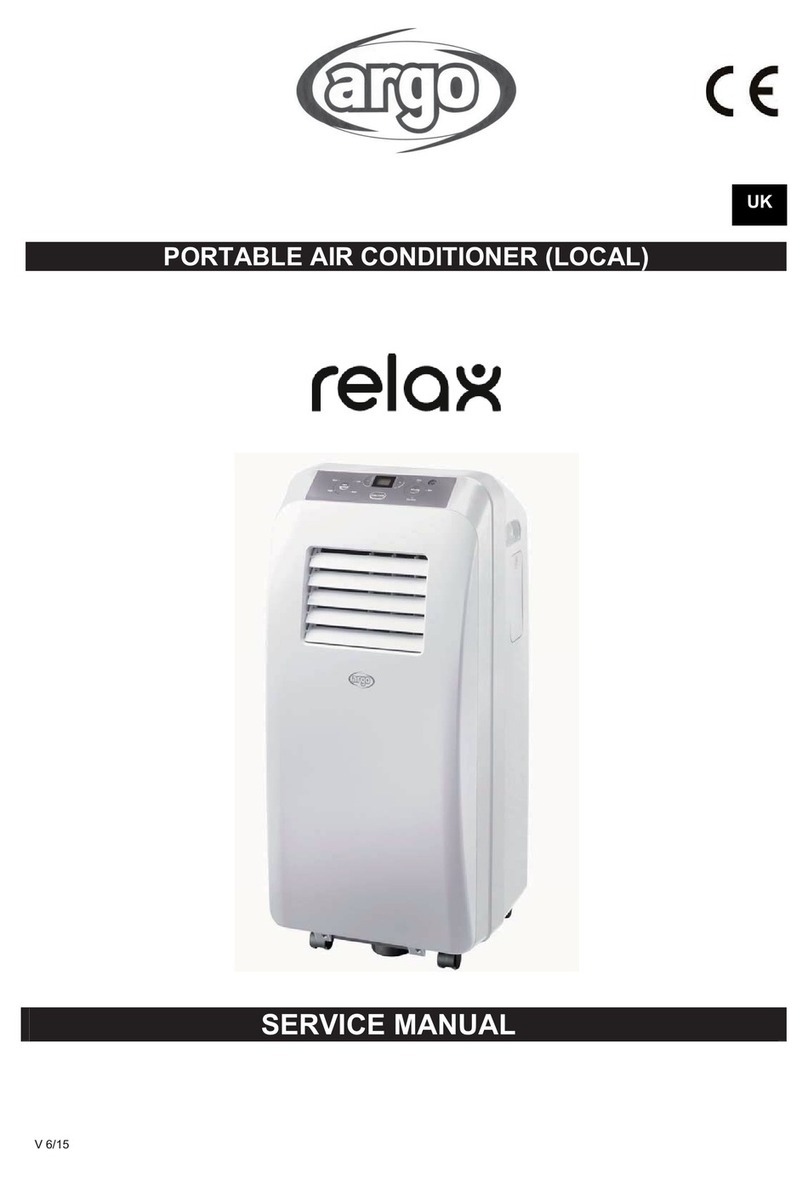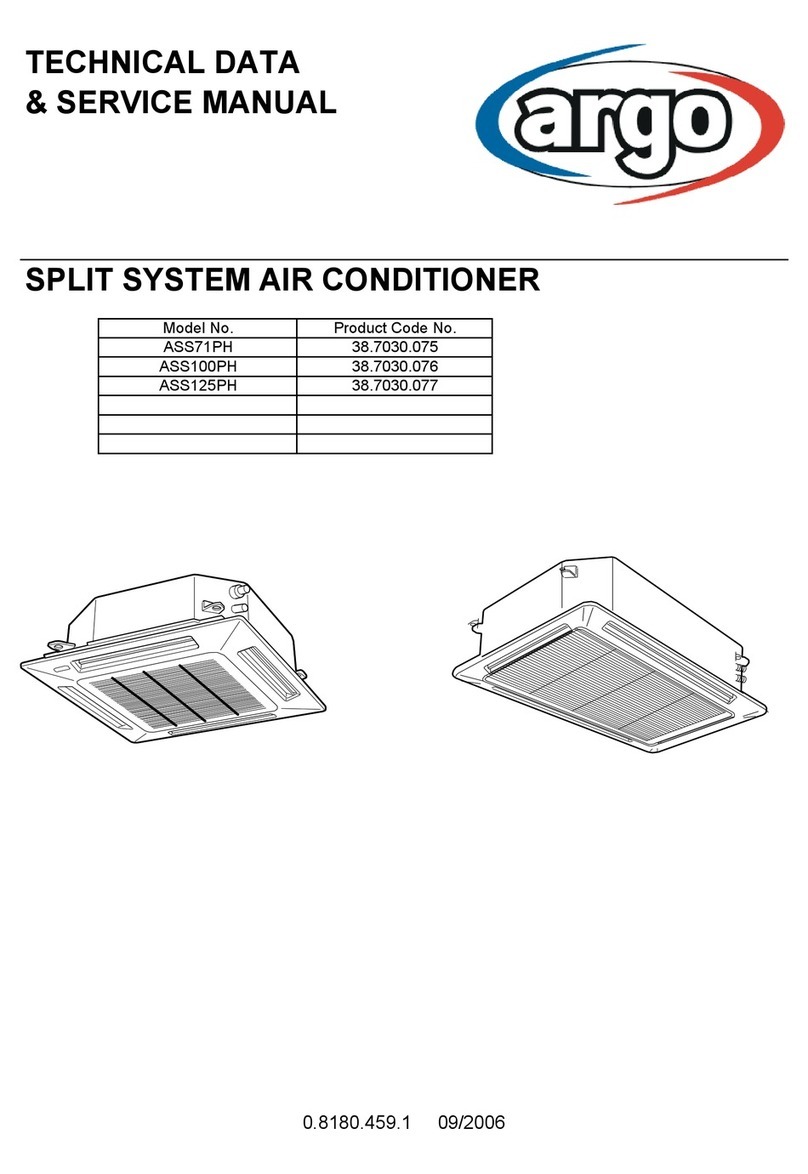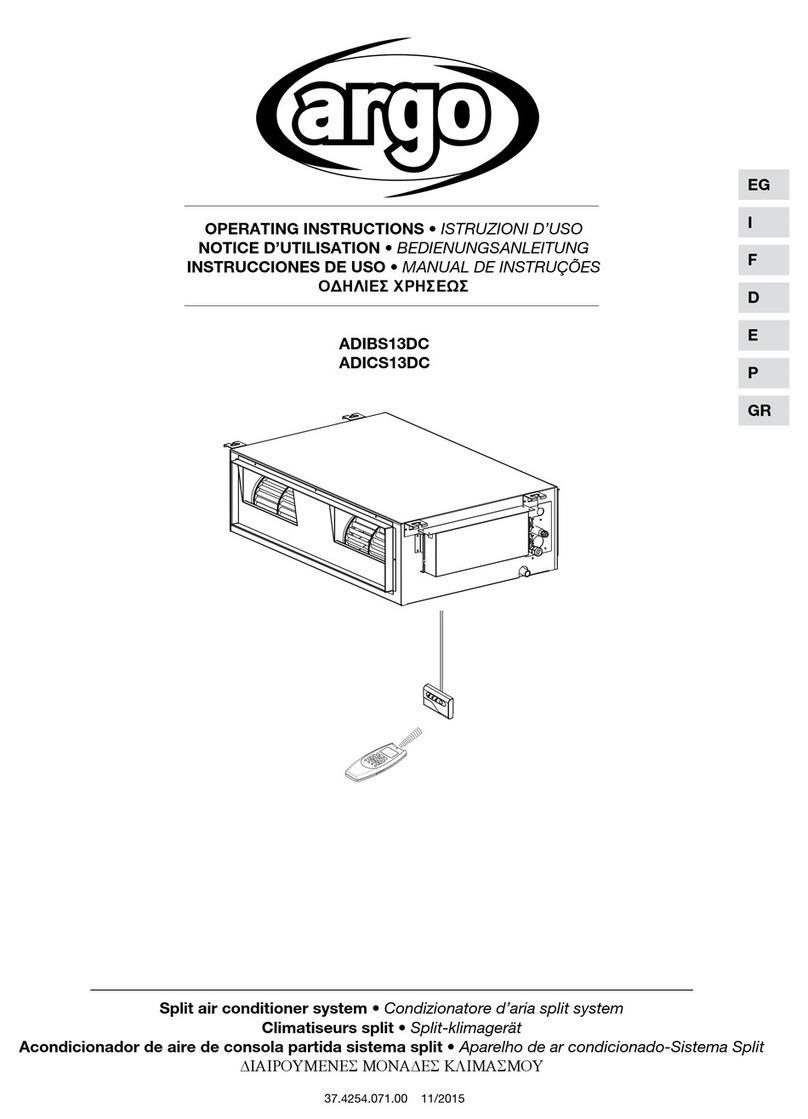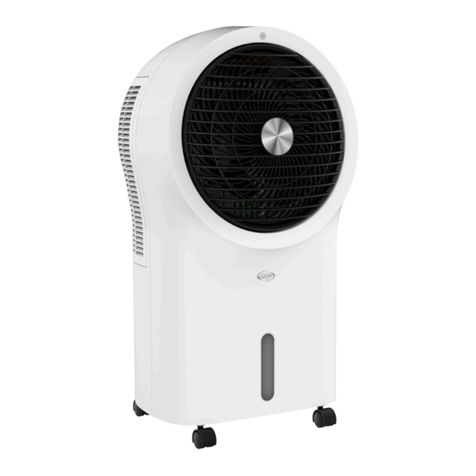V 05/15 9
8. HEALTH/AIR button
Press this button once to start the air purification function. The icon will appear on the
display. Press the button a second time to start the purification and sanitisation function
simultaneously. The and icons will appear on the display.
Press the button a third time to turn off both functions.
Press the button a fourth time to start the sanitisation function. The icon will appear on the
display.
9. SLEEP button
In cool, heat or dry mode, press this button to start the SLEEP function. The icon will
appear on the remote control display. Press the button again to exit the SLEEP function. The
icon will disappear from the display.
The temperature will increase or decrease by 2 degrees over two hours according to the
function selected (cool/heat).
10. TEMP button
Pressing this button will allow you to display the set temperature, the indoor ambient
temperature, or the outdoor ambient temperature on the indoor unit's display. You can cycle
through the settings on the remote control display as shown below:
nessuna
visualizzazione
nessunavisualizzazione no display
• When you select or “no display” with the remote control, the set temperature will appear
on the indoor unit's display.
• When you select with the remote control, the indoor ambient temperature will appear on
the indoor unit's display.
• When you select with the remote control, the outdoor ambient temperature will appear
on the indoor unit's display.
N.B.:
• It is not possible to display the outdoor ambient temperature on all models. The indoor unit
will receive the signal but will display the set temperature.
• The set temperature will appear on the unit's display on start-up, if enabled to do so.
• When you select to display the indoor or outdoor ambient temperature, the indoor unit will
display the corresponding temperature for three to five seconds, after which it will
automatically revert to displaying the set temperature.
11. TIMER ON button
SETTING TIMER ON
This function allows you to program the air conditioner to turn on. When you press this button,
the icon will disappear from the display and the word "ON" will flash on the remote control
display. Press "▲" or "▼" to adjust the TIMER ON setting.
Press and hold "▲" or "▼" for 2 seconds to rapidly change the time until you reach the desired
value. Press TIMER ON to confirm. The word "ON" will stop flashing. The icon will re-
appear on the display.
CANCELLING TIMER ON
If the TIMER ON function is enabled, press the TIMER ON button to cancel the setting.
